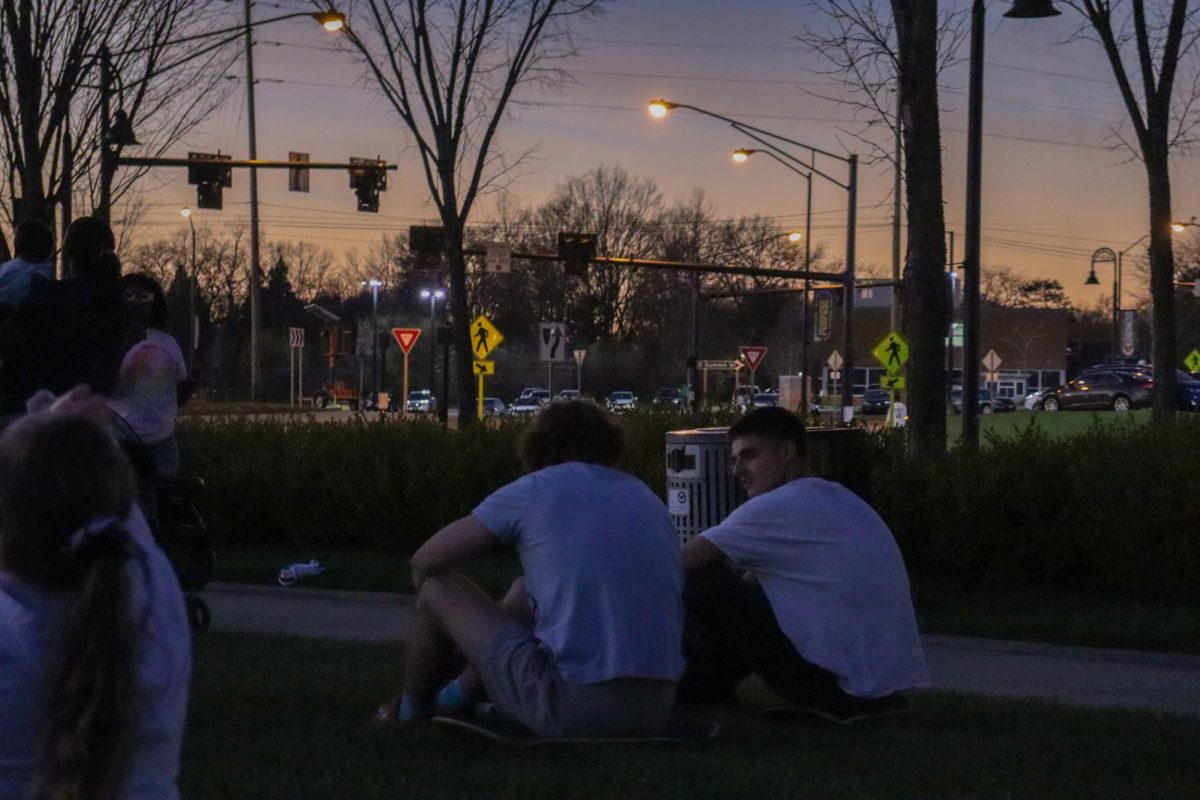Insecure and invisible: Problems with food access goes unnoticed at Kent State
April 24, 2016
Story has three short related sidebars: (SIDE BARS ARE FOUND AT BOTTOM)
— One defines the levels of food insecurity
— Second defines SNAP (food stamp) eligibility for students
— Third lists community resources and ways to help
Having a balanced diet isn’t necessarily a priority for Alexia Castillo, a sophomore public relations major. Instead, she worries more about being able to afford enough food.
“I miss just worrying about studying and having school be my number one priority while not having to worry about how I’m going to live off eating only PB&J and eggs,” Castillo said.
Castillo, 19, lives off campus in an apartment. She told the university she was a commuter to get around the university’s requirement that student must live on campus for two years. She said she probably will eat PB&J and eggs —for the day—at least three times a week because “it’s cheap and … fills (me) up”.
Castillo is dealing with what the U.S. Department of Agriculture calls “food insecurity.”
Food insecurity means not being able to afford or have access to healthy and balanced meals, which can include going without food at times. According to a growing number of studies being done on college campuses across the nation, food insecurity is on the rise as tuition, housing and other living expenses become increasingly expensive.
“I have big payments like my rent and my car that affect my budget, and my job doesn’t give me many hours,” Castillo said. “So recently, I’ve been trying to find a job with reasonable hours to just be able to make it by.”
A 2014 email survey of 300 Kent State students, which used USDA food security survey questions, found that almost 50 percent of the students surveyed were food insecure and 25 percent of those students had a very low level of food security. That projects to as many as 14,000 students.
The survey results concluded that students with the highest risk of food insecurity were ones living off-campus alone or with someone other than their parents.
A similar study was done in 2015 by graduate student Jennifer Marks for her graduate thesis. It was found that just above 22 percent of students—about 6,000—were food insecure.
Surveys at several other campuses show similar numbers.
In 2010, the City University of New York found that about 40 percent of its students experienced food insecurity in the past 12 months; those numbers were higher among students who worked at least 20 hours per week.
A 2014 study at Oregon State University found that 59 percent of students there were food insecure at some point during the previous year, which reportedly caused issues involving their academic success, as well as physical and emotional health.
Cassie Pegg-Kirby, director of the food pantry at the Women’s Center on campus, said she feels food insecurity at the college level may be disregarded by people because they believe if students can afford college, they must be able to afford food or even have too much food (as in the “Freshman 15”).
“I think on our campus and a number of campuses, there are people right on the edge of being able to do that and attend college,” Pegg-Kirby said. “I think a number of our students are making it work, but if one thing changes in their life—like a high heating bill or not getting enough hours at work—that can be enough to get them off track.”
Sara Goldrick-Rab, a professor of educational policy studies and sociology at the University of Wisconsin–Madison, studied food insecurity at community colleges in 2015. She found that there are two basic types of food insecure students: Those who were in the lower-middle class before they started college and were forced by their education expenses to deal with food insecurity for the first time and those who were in poverty before college; in their case, hunger and poverty were a preexisting condition.
The Southern Education Foundation reported that 51 percent of students in pre-K through 12th grade in the 2012-2013 school year were eligible for the federal program that provides free and reduced-price lunches.
Marks, the author of the second study of food insecurity at Kent State, said that while grades K-12 have federal programs in place to provide food to students in need, that aid disappears when they get to college. She said because these students may not qualify for federal aid programs like food stamps and their families can’t help support them, they don’t receive the help they need at college.
“I found that they’re living in a donut hole,” Marks said.
For the group of students who are experiencing food insecurity for the first time, there comes another issue: meal plans.
Kent State’s meal plan costs from approximately $1,800 to $2,700 a semester. Some students move off campus to cut costs—even if it means violating the policy that requires first and second year students to live on campus unless they commute. Students will often get their parents to say they’re staying at home just so they can get an apartment off-campus and save money.
Castillo moved off campus to find cheaper housing and avoid the meal plan.
“The food is over-priced,” she said. “On a weekly basis, I would spend around $80 on the meal plan and that just seems ridiculous. Now, I usually spend $30-$40 on my groceries and I’ll be set for at least two weeks on necessities.”
The problem students (who are) trying to budget their food money on their own find, Pegg-Kirby said, are unexpected expenses that force students to take money from their food budget.
Most students aren’t eligible for the federal government’s Supplemental Nutrition Assistance Program, the successor to food stamps.
“It’s harder for students to qualify for food stamps with how many hours they’re in class or studying and stipulations that make it more difficult for students to get resources,” Pegg-Kirby said. “Also, international students struggle because they’re unable to get those kinds of resources at all.”
Other resources are available off-campus, but students often have limited transportation options to reach them, Pegg-Kirby said.
Emanuel Jackson, a sophomore public relations major, said that he didn’t even know food aid existed for college students. Even then, he’s not sure if they would want to get it.
“I believe some students are embarrassed to get help due to not wanting to be perceived as needy or struggling,” Jackson said. “Their pride may get the best of them.”
Jackson lives in an apartment and works two jobs to afford rent and other billed expenses. He said he doesn’t usually have a lot of money to afford groceries or the time to cook. Jackson estimates that he spends around $20 a week on food and on occasion has gone without food for a day, aside from a snack.
Without proper nutrition, students can be negatively impacted academically, physically and emotionally.
In an article from Oregon State University’s Journal of College and Character called Food Insecurity as a Student Issue, it was found that students who work 10 to 15 hours weekly see positive impacts on grades, while students who are working more than 20 hours weekly have lower GPAs.
The paradox is that SNAP requires students to work 20 hours weekly to receive federal benefits. So students are left to decide to work more, get lower grades so they can qualify and afford food—or to work fewer hours to try to get better grades but go hungry, which studies show leads to lower grades.
“It’s a frustrating issue dealing with such a large university who is interested in their students’ academic success and in tuning out productive and engaging members of society,” Marks said. “But this can’t happen when so many students don’t have access to food on a regular basis that is nourishing for their bodies and minds.”
Pegg-Kirby said it’s simple: “If your basic needs aren’t met and you’re not eating, it’s going to be really hard to get your school work done and really hard to not pay attention to those hunger pains,” she said.
Pegg-Kirby said faculty members have donated grocery gift cards to the pantry after talking with struggling students and realized it was a result of them not being able to eat.
Five years ago, the Women’s Center opened Kent State’s only food pantry.
“I think of it as, ‘Maybe if we can get food in your belly and you don’t have to worry about it, you can pay those other bills and we can get you through those rough spots,’ ” Pegg-Kirby said. “That’s really what our goal is right now,” she said.
Any member of the Kent State community—students, faculty or staff, male or female —can use the pantry. Pegg-Kirby said they expect this year’s total visits to exceed last year’s 106.
Because resources are limited, Pegg-Kirby said the center limits visits to twice per semester. But, unlike other pantries, students don’t have to provide any proof of need.
The Women’s Center also works in connection with the Campus Kitchen Project (CPK), a student volunteer organization that works to prepare and distribute food to the needy in places like Kent and Akron.
Pegg-Kirby said that sometimes students would rather volunteer for CPK, which allows them to help others and get hot meals and fresh food at the program.
Another option for students in need is Kent Social Services, which is only a short walk from campus.
“There’s so many good-hearted people in the community willing to help so no one in Kent should have to go hungry,” said Belinda Waller, a secretary at Kent Social Services.
Waller’s desk overlooks Kent Social Services’ dining area. She said only a handful of visitors looked to be college-age. Students can get a hot meal daily and groceries once a month there.
But Pegg-Kirby and Marks agree that the campus can do more to help students in need.
The Women’s Center will expand its pantry and offer a larger variety of food when it moves into larger quarters in the fall. Pegg-Kirby said the center will also increase educational programs on community resources and food insecurity in general.
In 2013, Marks proposed the idea to build a community garden at a centralized location on the Kent State campus. Currently, there is a community garden on the grounds of the old Allerton buildings. Marks would like to relocate it or build a second garden and encourage student involvement to help provide fresh produce to those in need on campus.
“I’m always amazed with how much I learn working in this environment about people’s stories and resilience and the reality that I’m only a paycheck or two from being in that position,” Pegg-Kirby said. “It’s not just other people; it’s all of us in many ways. Unfortunately, I think that’s more common than we know and people are just not talking about it.”
Jenna Kuczkowski is a technology reporter for The Kent Stater. Contact her at [email protected].
SIDE BAR 1>
The USDA categorizes food insecurity into four levels:
-
High food security—Households had no problems, or anxiety about, consistently accessing adequate food.
-
Marginal food security—Households had problems at times, or anxiety about, accessing adequate food, but the quality, variety, and quantity of their food intake were not substantially reduced.
-
Low food security—Households reduced the quality, variety, and desirability of their diets, but the quantity of food intake and normal eating patterns were not substantially disrupted.
-
Very low food security—At times during the year, eating patterns of one or more household members were disrupted and food intake reduced because the household lacked money and other resources for food.
Hunger differs from food insecurity in that hunger is a potential consequence of food insecurity that—because of prolonged, involuntary lack of food—results in discomfort, illness, weakness or pain that goes beyond the usual uneasy sensation according to the USDA and exists on the very low food security level.
SIDE BAR 2>
College Student Eligibility for SNAP
According to the CLASP website—which is a national, nonpartisan, anti-poverty nonprofit advancing policy solutions for low-income people that breaks down the SNAP policy so it’s understandable—SNAP eligibility is based on monthly income, so Congress was concerned that college students from middle-class families could qualify even though they don’t need help. Therefore, most college students who are attending as at least a part-time student are excluded from receiving SNAP, but there are a set of exceptions that apply to many non-traditional and low-income students.
To receive SNAP benefits while attending college as at least a part-time student, the student must be working at least 20 hours per week or receiving work-study funds. Students’ income must also not exceed $981 a month. For thosewhodo qualify, the maximum monthly amount for one person to receive from SNAP is $189 a month. But most recipients receive less because they earn more than others in need.
Students who live in dorms or purchase more than half their meals from a meal plan are not eligible for benefits. Undocumented non-citizens and non-citizens with temporary status, including those who entered with student visas, are not eligible for SNAP benefits which puts Kent State international students with need at a disadvantage. Additional requirements and qualifications for SNAP and can be found in detail on the federal website.
SIDE BAR 3>
If you can help:
The Women’s center on campus accepts donations of any size and urges students who can help, or have extra money on their meal plan to donate to the pantry to help students in need.
Cassie Pegg-Kirby, director of the pantry, said that snack-sized food and cans with pop-top lids are very sought after since it offers convenience to students who may not own a cooking utensils or equipment like can openers or stoves.
She said food donated at the end of the spring semester helps to sustain the pantry over the summer months when donations start to run low. Students interested in donating can check the Women’s Center website for a list of items they need, or buy what they like and call ahead before bringing it over.
If you’re in need:
Kent Social Services is located at 1066 S. Water Street in Kent and offers hot meals every day except Saturday to anyone who stops in at the designated times.
Social Services also provides a service where students can call 330-673-6963 to schedule a pantry appointment to come collect groceries once a month with proof of residence.
Student’s seeking help from the Women’s Center Pantry, located on campus in the Alumni Carriage House at 125 Midway Drive, can call 330-672-9230 or come in during their hours to access the pantry.
















